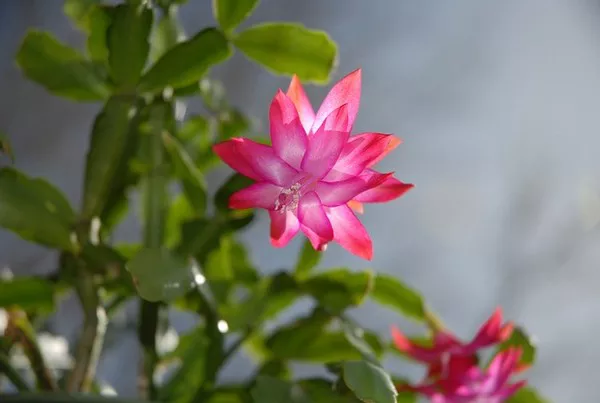Succulents have become immensely popular in recent years due to their aesthetic appeal and reputation for being low-maintenance plants. However, like all living organisms, succulents require proper care and nourishment to thrive. Fertilization is a crucial aspect of succulent care that often gets overlooked. In this article, we will explore the intricacies of succulent fertilization, including what to fertilize succulents with, when to fertilize, and the dos and don’ts of succulent fertilization.
Understanding Succulents
Before delving into the world of fertilization, it’s important to understand the unique nature of succulents. Succulents are plants that have evolved to survive in arid environments by storing water in their leaves, stems, or roots. They have adapted to extract nutrients from poor soils, making them well-suited for a low-nutrient environment. This adaptation allows them to thrive with minimal maintenance, but they still benefit from an occasional nutrient boost in the form of fertilizer.
What Do Succulents Need?
To provide the best care for your succulents, it’s crucial to understand their nutritional requirements. Succulents primarily require three essential macronutrients:
Nitrogen (N): Nitrogen is crucial for vegetative growth, and it aids in the development of leaves and stems. Succulents need a moderate amount of nitrogen, but excessive nitrogen can lead to overly lush growth, which may not be desirable for these compact plants.
Phosphorus (P): Phosphorus is vital for root development and flowering. For succulents, it’s essential to have a balanced phosphorus level to encourage robust root systems and beautiful blooms.
Potassium (K): Potassium plays a significant role in overall plant health. It helps succulents withstand stress, improve water retention, and develop strong cell walls.
In addition to these primary macronutrients, succulents also require micronutrients in smaller quantities. These include elements like magnesium, calcium, and iron, which support various metabolic processes within the plant.
Choosing the Right Fertilizer
Selecting the appropriate fertilizer for your succulents is crucial. Fertilizers are typically categorized by their nutrient content, represented by three numbers on the label. These numbers indicate the percentage of nitrogen (N), phosphorus (P), and potassium (K) in the product, respectively. For succulents, it’s best to use a balanced, low-nitrogen fertilizer. A general recommendation is a 10-10-10 or 5-10-5 fertilizer.
Organic vs. Synthetic Fertilizers
Both organic and synthetic fertilizers can be suitable for succulents, but they have different advantages and considerations:
Organic Fertilizers: Organic options like compost, worm castings, or fish emulsion are gentle on succulents and provide a slow release of nutrients. They also help improve soil structure and microbial activity. However, they might not offer precise control over nutrient levels.
Synthetic Fertilizers: Synthetic or chemical fertilizers offer more control over nutrient concentrations and are often faster-acting. They are formulated to deliver specific ratios of nutrients. Be cautious when using synthetic fertilizers, as over-fertilizing can harm succulents due to their sensitivity to excess nutrients.
When to Fertilize
The timing of succulent fertilization is another critical aspect to consider. Succulents have specific growth phases, and understanding these phases helps determine when to fertilize:
Spring and Summer: Spring and summer are the primary growing seasons for most succulents. During this time, you can fertilize your succulents every 4 to 6 weeks, following the package instructions for the chosen fertilizer.
Fall: As the days shorten and temperatures drop, many succulents slow down their growth. Reduce fertilization frequency to once every 6 to 8 weeks during the fall.
Winter: In the winter, many succulents enter a period of dormancy. It’s generally best to avoid fertilizing during this time, as they do not actively require nutrients. Resume fertilization in the spring.
Fertilizing Techniques
Proper techniques for applying fertilizer to succulents are essential to avoid over-fertilization or damaging the plants. Here are some tips to follow:
Dilution: Always follow the recommended dilution rates provided on the fertilizer packaging. Overly concentrated solutions can harm your succulents.
Pre-Watering: Water your succulents a day or two before applying fertilizer. This ensures that the roots are adequately hydrated and can better absorb nutrients.
Root Application: Apply the fertilizer directly to the soil around the base of the plant. Avoid getting the fertilizer on the leaves, as this can lead to burns.
Slow Release: Slow-release fertilizers are a convenient option for succulents. They provide a steady supply of nutrients over an extended period, reducing the risk of over-fertilization.
Common Mistakes to Avoid
Fertilizing succulents can be tricky, and there are common mistakes that many gardeners make:
Over-Fertilization: Succulents are sensitive to excess nutrients, especially nitrogen. Over-fertilizing can lead to leggy growth and other issues. Always follow recommended dosages.
Fertilizing During Dormancy: Applying fertilizer to dormant succulents is unnecessary and potentially harmful. They won’t actively use the nutrients during this period.
Fertilizing Dry Plants: Fertilizing dry succulents can lead to root burn. Ensure that the soil is adequately moist before applying fertilizer.
Ignoring Soil Quality: Good soil is a crucial foundation for healthy succulents. Ensure your soil is well-draining and provides a stable environment for your plants.
Conclusion
Fertilizing succulents is an important aspect of their care, contributing to their overall health and vitality. By understanding the nutritional needs of succulents, choosing the right fertilizer, and following proper fertilization techniques, you can ensure that your succulents flourish and continue to grace your home with their unique beauty. Remember, the key to successful succulent fertilization is balance, moderation, and a keen eye for the specific needs of each plant in your collection.


